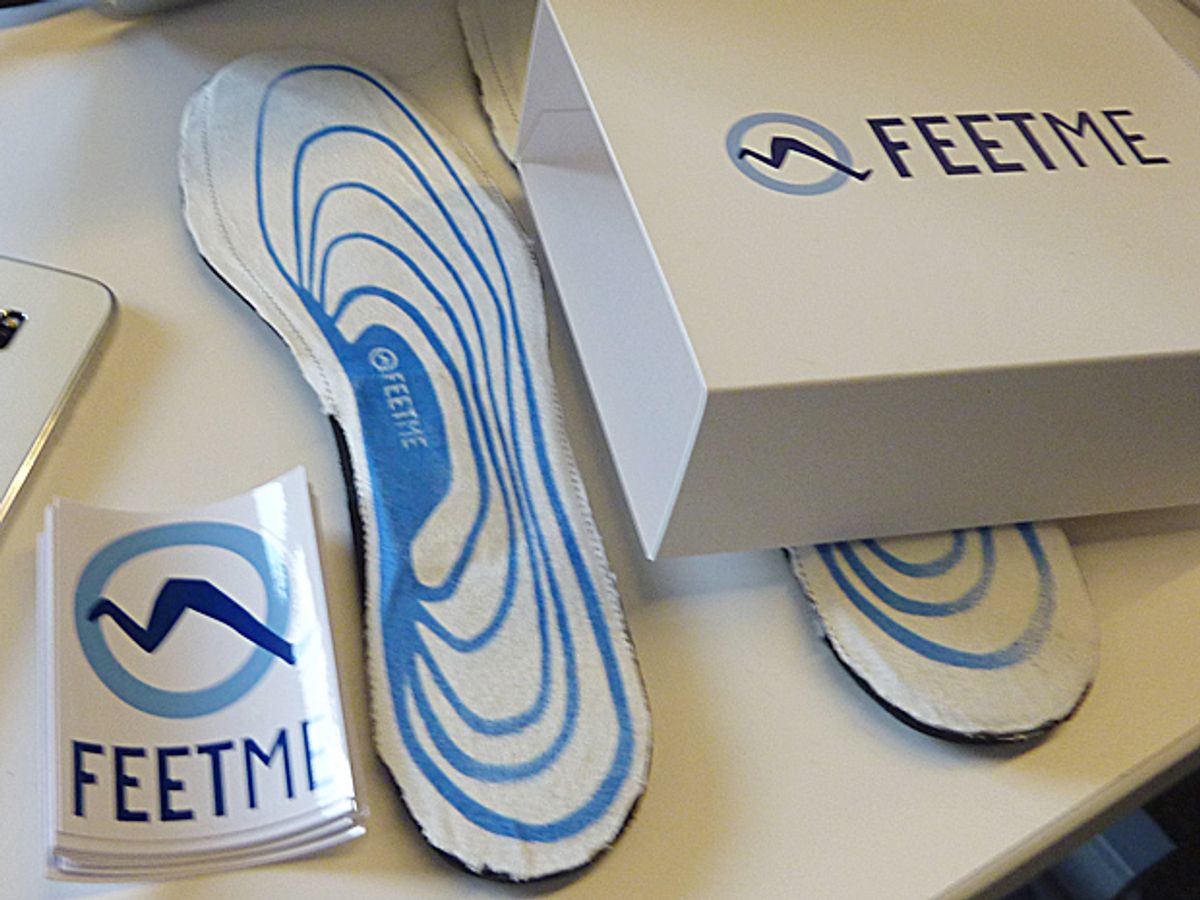HAX, formerly Haxlr8r, has been incubating hardware startups since 2011, taking 65 companies to market so far. The majority of them have done something involving low-cost applications of robotics, said HAX program director Duncan Turner, speaking at the accelerator’s spring launch event in San Francisco on 11 May.
But this year, with HAX launching its 6th class of startups, there’s a new trend coming on strong, Turner said—companies aiming to lower the cost of medical technology, for either medical professionals or consumers.
This season, six of HAX’s 15 startups are aiming at that niche.

Kokoon, out of London, introduced soft, comfortable headphones designed to go past tracking sleep to improving sleep; the gadget includes electroencephalographic (EEG) sensors to track changes in brain waves during the sleep cycle and adjust the sounds from the headphones appropriately: It delivers a relaxation program or music to help the user fall asleep, white noise during the deepest phases of sleep to block out interruptions, and an alarm that waits for a light phase of the sleep cycle to go off. Kokoon is available for US $169 on Kickstarter and will retail for $299.

BBB, based in San Francisco, China, and South Korea, has built a mobile blood testing device that reads disposable test strips and sends the readings to a smart phone for tracking. The initial gadget is able to read only glucose or cholesterol levels from a drop of blood, but the company hopes to expand to perform some 200 tests. The first, glucose, version will cost $500 per year, including unlimited test strips.
Miramix is an online service based in Boston for people designing nutritional supplements to get custom blends of their products manufactured and shipped to consumers. The company says its automated “microfactory” dispenses tiny beads of substances into containers or capsules to create the custom blends.

Lir Scientific, based in San Francisco, introduced a bladder fullness tracker. This $400 wearable device places electrodes and sensors on the abdomen to sense, by changes in the conductivity of the area, when the bladder is full, and then sends a signal to a smartphone alerting a user who, due to a medical problem, can’t naturally detect that condition. The company says its biggest competitors are adult diapers; it has done small scale testing and has planned a larger, pilot study with the University of California, San Francisco this year.
FeetMe, based in Paris, has developed smart insoles, each containing 100 pressure sensors that detect unusual pressure points as a user walks, and communicate any problems to a smartphone. Initially, the company founders indicated, the $300 footpads are targeted at diabetics who have lost sensitivity in their feet, but eventually FeetMe plans to make an athletic version for use in training. (Meanwhile, researchers at the Fraunhofer Institute for Silicate Research in Wurzberg, Germany, announced a similar approach to monitoring the feet of diabetics, using sensor-laden socks).

Ouro_botics, from Ireland, announced a tabletop 3-D printer for human tissue that, it promised, will be vastly cheaper than the $100,000 systems currently on the market. CEO Jemma Redmond says she’s been working on tissue printers for four years, starting with an artificial womb, then moving on to human fingers, when, she says, her funding was cut and she wanted to “give the university the finger.”
Tekla S. Perry is a senior editor at IEEE Spectrum. Based in Palo Alto, Calif., she's been covering the people, companies, and technology that make Silicon Valley a special place for more than 40 years. An IEEE member, she holds a bachelor's degree in journalism from Michigan State University.



